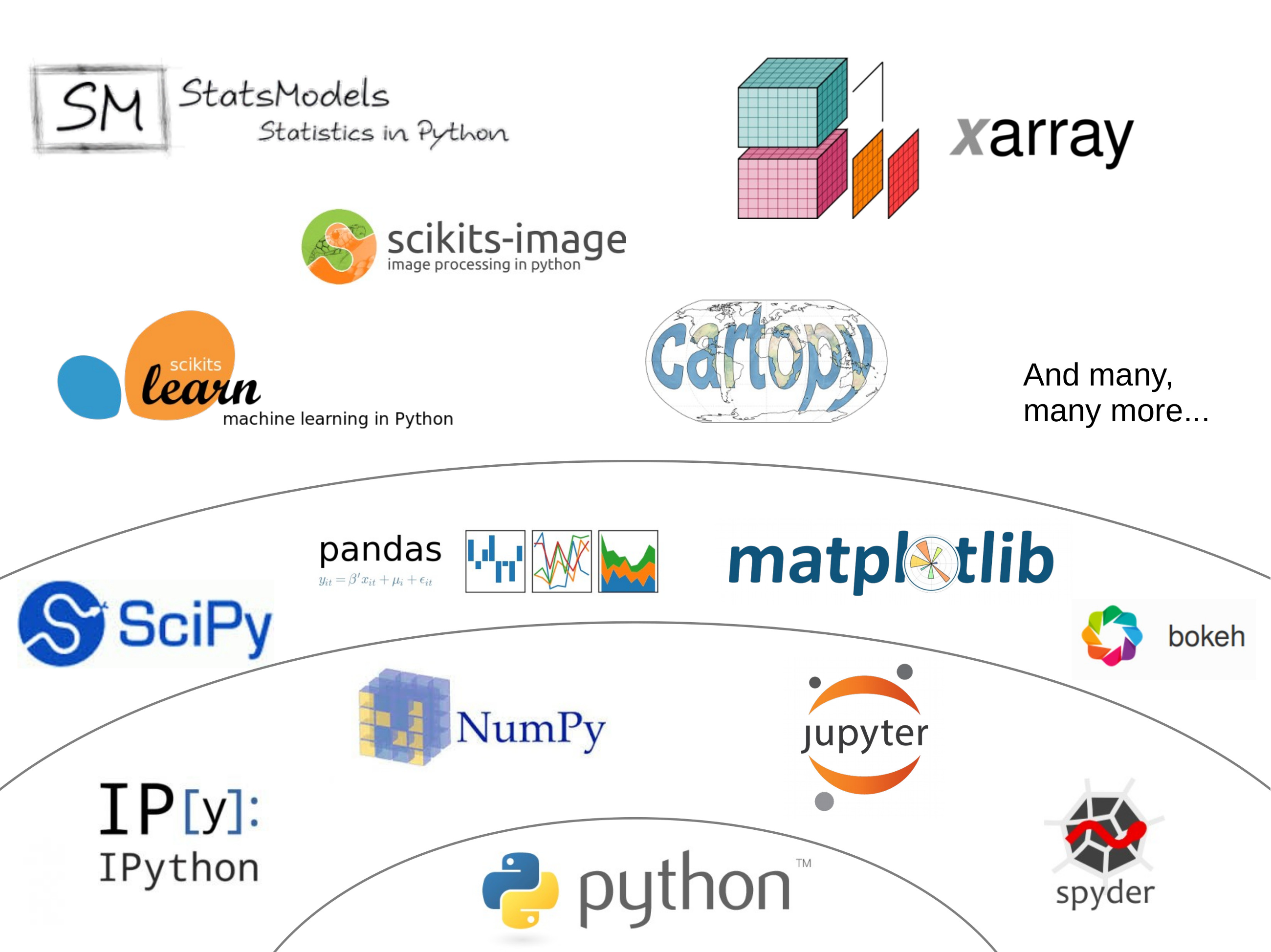The scientific Python stack#
Unlike MATLAB, the set of Python tools used by scientists does not come from one single source. It is the result of a non-coordinated, chaotic and creative development process originating from a community of volunteers and professionals.
In this chapter I will shortly describe some of the essential tools that every scientific Python programmer should know about. It is not representative or complete: it is just a list of packages I happen to know about, and I surely missed many of them.
Python’s scientific ecosystem#
The set of Python scientific packages is sometimes referred to as the “scientific Python ecosystem”. I did not find an official explanation for this name, but I guess that it has something to do with the fact that many packages rely on the others to build new features on top of them, like a natural ecosystem.
Jake Vanderplas made a great graphic in a 2015 presentation (the video of the presentation is also available here if you are interested), and I took the liberty to adapt it a little bit:

The core packages#
NumPy: documentation, code repository
SciPy: documentation, code repository
Matplotlib: documentation, code repository
NumPy provides the N-dimensional arrays necessary to do fast computations, and SciPy adds the fundamental scientific tools to it. SciPy is a very large package and covers many aspects of the scientific workflow. It is organized in submodules, all dedicated to a specific aspect of data processing. For example: scipy.integrate, scipy.optimize, or scipy.linalg. Matplotlib is the traditional package to make graphics in Python.
Essential NumPy “extensions”#
There are two packages which I consider essential when it comes to data processing:
pandas provides data structures designed to make working with labeled data both easy and intuitive (documentation, code repository).
Xarray extends pandas to N-dimensional arrays (documentation, code repository).
They both add a layer of abstraction to NumPy arrays, giving “names” and “labels” to their dimensions and the data they contain.
Domain specific packages#
There are so many of them! I cannot list them all, but here are a few that you will probably come across in your career:
Geosciences/Meteorology:
MetPy: the meteorology toolbox
Cartopy: maps and map projections
xESMF: Universal Regridder for Geospatial Data
xgcm: General Circulation Model Postprocessing with xarray
GeoPandas: Pandas for vector data
Rasterio: geospatial raster data I/O
wrf-python: working with output from the WRF model
Statistics/Machine Learning:
statsmodels: statistic toolbox for models and tests
seaborn: statistical data visualization
scikit-learn: machine learning tools
TensorFlow: Google’s brain
PyTorch: Facebook’s brain
Miscellaneous:
scikit-image: image processing
Bokeh: interactive plots
Plotly: interactive plots
Dask: parallel computing
SymPy: symbolic mathematics
…

